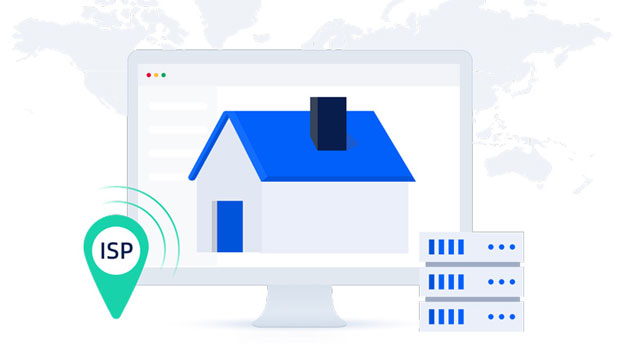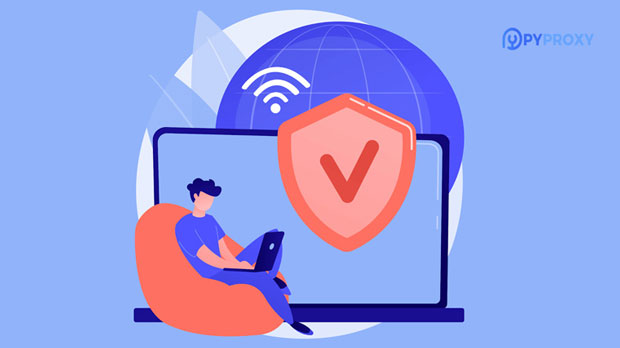In the context of static proxy usage, reliability plays a crucial role in determining the success of proxy solutions. Two popular proxy tools, PYPROXY and FoxyProxy, are commonly compared due to their differing functionalities, architectures, and application environments. This article will provide an in-depth reliability analysis of PyProxy and FoxyProxy, focusing on their performance, stability, scalability, and security. The aim is to help users understand which proxy tool is more suited for their needs in static proxy use cases, ultimately contributing to more informed decision-making in selecting the appropriate solution. Introduction to Static Proxy Usage static proxies are typically used in scenarios where a consistent IP address is required over extended periods, such as for web scraping, accessing geo-restricted content, or managing multiple accounts on a particular platform. Unlike dynamic proxies, static proxies do not change their IP addresses frequently, ensuring that the user is recognized as the same entity throughout their activities. Reliability in static proxy systems is paramount since any downtime, IP blocking, or instability can lead to significant disruptions in business operations. Therefore, a reliable proxy solution is one that provides high availability, low latency, and robust security.PyProxy OverviewPyProxy is a Python-based proxy solution designed to provide a customizable and flexible proxy management experience. It allows users to create, manage, and switch between different proxies programmatically, making it ideal for developers and those looking for a highly configurable solution. PyProxy is often used in automated web scraping tools, batch processing tasks, and other use cases that require flexibility.Reliability Factors of PyProxy1. Performance PyProxy’s performance is highly dependent on the underlying infrastructure and the configuration settings of the proxy server. As a Python-based solution, it can be optimized for speed and efficiency, but the speed may fluctuate depending on the number of active requests, the distance between the client and the proxy server, and the health of the proxy pool being used. A key factor in PyProxy's reliability is its ability to scale and handle concurrent requests efficiently without bottlenecks, although users need to ensure proper server resources are allocated to maintain consistent performance.2. Scalability Scalability is one of the key strengths of PyProxy. It allows users to scale the system easily by adding new proxy servers or pools, enabling the proxy system to accommodate growing demands. However, scaling in PyProxy requires manual intervention and careful configuration. If not managed correctly, it can lead to proxy downtime or inefficiencies in routing.3. Security PyProxy offers a high degree of security, particularly when used with encrypted communication channels. However, since PyProxy allows for custom proxy setups, it places a significant burden on users to ensure that their configurations are secure. Without adequate attention to detail, users could be vulnerable to MITM (Man-In-The-Middle) attacks, data breaches, or proxy leaks.4. Reliability PyProxy’s reliability depends on its configuration and the quality of the proxy pool. If the proxy pool includes unreliable proxies or if the setup is not optimized for handling large volumes of requests, users may experience issues with IP blocking or slowdowns. Additionally, being reliant on Python means it requires regular updates to keep up with changes in web security protocols and the evolving nature of the internet.FoxyProxy OverviewFoxyProxy is a browser extension that manages proxy settings for Firefox and Chrome. It allows users to easily switch between different proxy servers for different web activities, making it highly convenient for casual users and businesses alike. FoxyProxy is typically used in manual proxy switching scenarios rather than for programmatic control or large-scale automation.Reliability Factors of FoxyProxy1. Performance FoxyProxy’s performance is generally stable, as it relies on existing browser settings and handles smaller, less complex requests. However, it is not as optimized for handling large-scale automation tasks. Since it operates within the browser, its speed and reliability can be influenced by the browser’s performance and any other browser extensions running concurrently. While it is ideal for simpler use cases, it may not scale well for high-volume activities.2. Scalability Scalability is a limitation of FoxyProxy. Unlike PyProxy, which allows for manual scaling by adding proxy servers to the pool, FoxyProxy is limited by the number of proxies that can be configured within the browser. While users can configure multiple proxies, handling a large-scale scraping or automation project would require constant manual intervention, making it impractical for businesses needing large-scale proxy management.3. Security In terms of security, FoxyProxy provides basic encryption for proxy connections, but it does not offer advanced security features like SSL/TLS management. Since it operates primarily as a browser extension, users are at the mercy of the browser’s security settings. This means that users should also take precautions against browser vulnerabilities and ensure that their proxy settings are securely configured to avoid exposure to security risks.4. Reliability FoxyProxy is generally reliable for individual or small-scale proxy use cases. However, its dependency on browser functionality and limited scalability makes it less reliable when managing multiple concurrent requests or handling heavy traffic loads. Since it does not allow for detailed monitoring or reporting, it might also be difficult for users to track performance in real-time.Comparison of Reliability Between PyProxy and FoxyProxy1. Performance Both PyProxy and FoxyProxy have distinct strengths in terms of performance. PyProxy excels in scalability and high-concurrency environments, making it the preferred choice for large-scale automation tasks. FoxyProxy, on the other hand, is more suited for low-volume, manual proxy switching and simpler use cases. For users who require high performance in complex, multi-threaded tasks, PyProxy is more reliable.2. Scalability PyProxy has a clear advantage in terms of scalability. As an open-source solution, it allows users to add proxies, optimize their configurations, and adjust their system to meet growing demands. FoxyProxy’s scalability is constrained by the limitations of the browser environment, making it less suitable for projects that require flexibility and expansion.3. Security In terms of security, PyProxy offers a more customizable experience, allowing for the implementation of robust encryption protocols and proxy management techniques. While FoxyProxy provides basic encryption, it lacks the advanced security measures needed for highly sensitive activities. Therefore, PyProxy is generally the more secure option for users dealing with private or confidential data.4. Reliability in Long-Term Use Over time, PyProxy’s reliability can be maintained through proper management and proactive troubleshooting, particularly with regard to proxy pool quality. FoxyProxy, while reliable for short-term or low-volume use, may experience issues in terms of consistency when used over extended periods or for complex tasks due to its limited scalability and dependence on browser resources.In conclusion, both PyProxy and FoxyProxy are reliable proxy solutions but are suited to different use cases. PyProxy excels in scenarios that demand high performance, scalability, and customizability. It is best for developers or businesses managing large-scale automation tasks. FoxyProxy, while offering ease of use and reliability for simple scenarios, is limited in scalability and performance for complex, high-demand environments. Users should choose the solution that aligns best with their specific requirements, balancing ease of use, security, performance, and scalability.
Sep 16, 2025





















































